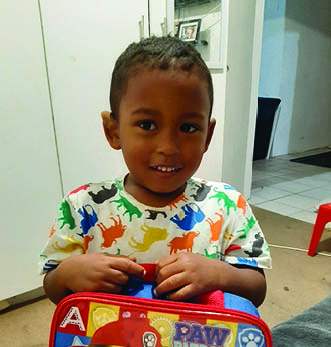Cayden Solomons (5) was diagnosed with a hereditary blood clotting disorder – severe haemophilia A – shortly after birth.
When a person has haemophilia, their blood does not clot properly because it doesn't have enough blood-clotting proteins (factor VIII).
As a result, Cayden bleeds longer than other people. Bleeds can occur internally, in joints and muscles; or externally, from minor cuts, dental procedures or injuries.
“Cayden is very active and loves to explore. I always feel like I need to wrap him up in bubble wrap because I’m so afraid of him injuring himself,” says his mom Jamie Solomons.
Types of haemophilia
There are two main types of haemophilia.
“Haemophilia A is four times more common than haemophilia B. More than half of people with haemophilia A have the severe form,” says Professor Alan Davidson. He is the Head of the Blood and Cancer Service at Red Cross War Memorial Children’s Hospital, where Cayden is being treated.
Haemophilia B disease happens due to a lack of clotting factor IX and occurs in around one in every 25 000 males worldwide, he adds.
Although no cure exists for haemophilia, doctors can successfully treat the condition. Treatment focuses on replacing the missing protein, preventing complications and giving or replacing the clotting factors that are too low or missing.
“Cayden’s treatment was hectic and emotional because he has difficult veins and had to be pricked more than once. Seeing my child cry in pain always breaks my heart, but I know it’s something he needs,” says Solomons.
Despite his condition, Cayden is a well-adjusted, clever and happy boy. “He knows a lot about his condition and is very vocal about it,” says his mom.
Signs to watch for
Solomons urges parents who suspect their children may have haemophilia to get treatment for them as soon as possible. “This is important to help reduce the risk of damage to joints, muscles and other body parts.”
Signs of haemophilia include:
- Unexplained and excessive bleeding from cuts, injuries, surgery and dental work.
- Many large or deep bruises.
- Unusual bleeding after vaccinations.
- Pain, swelling or tightness in the joints.
- Blood in the urine or stool.
- Nosebleeds without a known cause.
- Unexplained irritability in infants.
For more information about haemophilia or to get help, visit your closest healthcare facility.



 Facebook
Facebook Twitter
Twitter WhatsApp
WhatsApp